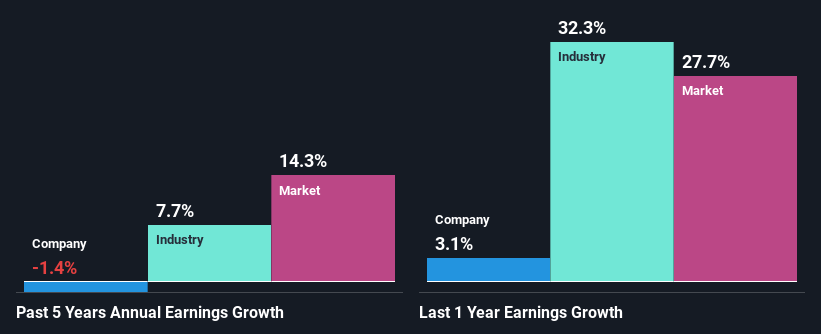Sensient Technologies Corporation (NYSE:SXT) Has Fared Decently But Fundamentals Look Uncertain: What Lies Ahead For The Stock?
Sensient Technologies' (NYSE:SXT) stock is up by 1.4% over the past week. Given that the stock prices usually follow long-term business performance, we wonder if the company's mixed financials could have any adverse effect on its current price price movement Specifically, we decided to study Sensient Technologies' ROE in this article.
Return on Equity or ROE is a test of how effectively a company is growing its value and managing investors’ money. Put another way, it reveals the company's success at turning shareholder investments into profits.
View our latest analysis for Sensient Technologies
How Do You Calculate Return On Equity?
The formula for return on equity is:
Return on Equity = Net Profit (from continuing operations) ÷ Shareholders' Equity
So, based on the above formula, the ROE for Sensient Technologies is:
13% = US$124m ÷ US$962m (Based on the trailing twelve months to March 2022).
The 'return' refers to a company's earnings over the last year. That means that for every $1 worth of shareholders' equity, the company generated $0.13 in profit.
What Is The Relationship Between ROE And Earnings Growth?
Thus far, we have learned that ROE measures how efficiently a company is generating its profits. Depending on how much of these profits the company reinvests or "retains", and how effectively it does so, we are then able to assess a company’s earnings growth potential. Generally speaking, other things being equal, firms with a high return on equity and profit retention, have a higher growth rate than firms that don’t share these attributes.
Sensient Technologies' Earnings Growth And 13% ROE
To begin with, Sensient Technologies seems to have a respectable ROE. Even so, when compared with the average industry ROE of 16%, we aren't very excited. Additionally, the flat earnings seen by Sensient Technologies over the past five years doesn't paint a very bright picture. Not to forget, the company does have a decent ROE to begin with, just that it is lower than the industry average. Hence there might be some other aspects that are causing the flat growth in earnings. For example, it could be that the company has a high payout ratio or the business has alloacted capital, for instance.
Next, on comparing with the industry net income growth, we found that the industry grew its earnings by7.7% in the same period.
The basis for attaching value to a company is, to a great extent, tied to its earnings growth. What investors need to determine next is if the expected earnings growth, or the lack of it, is already built into the share price. This then helps them determine if the stock is placed for a bright or bleak future. Is SXT fairly valued? This infographic on the company's intrinsic value has everything you need to know.
Is Sensient Technologies Using Its Retained Earnings Effectively?
With a high three-year median payout ratio of 56% (implying that the company keeps only 44% of its income) of its business to reinvest into its business), most of Sensient Technologies' profits are being paid to shareholders, which explains the absence of growth in earnings.
Additionally, Sensient Technologies has paid dividends over a period of at least ten years, which means that the company's management is determined to pay dividends even if it means little to no earnings growth. Upon studying the latest analysts' consensus data, we found that the company's future payout ratio is expected to drop to 41% over the next three years. As a result, the expected drop in Sensient Technologies' payout ratio explains the anticipated rise in the company's future ROE to 17%, over the same period.
Summary
On the whole, we feel that the performance shown by Sensient Technologies can be open to many interpretations. Primarily, we are disappointed to see a lack of growth in earnings even in spite of a moderate ROE. Bear in mind, the company reinvests a small portion of its profits, which explains the lack of growth. Having said that, looking at current analyst estimates, we found that the company's earnings growth rate is expected to see a huge improvement. Are these analysts expectations based on the broad expectations for the industry, or on the company's fundamentals? Click here to be taken to our analyst's forecasts page for the company.
Have feedback on this article? Concerned about the content? Get in touch with us directly. Alternatively, email editorial-team (at) simplywallst.com.
This article by Simply Wall St is general in nature. We provide commentary based on historical data and analyst forecasts only using an unbiased methodology and our articles are not intended to be financial advice. It does not constitute a recommendation to buy or sell any stock, and does not take account of your objectives, or your financial situation. We aim to bring you long-term focused analysis driven by fundamental data. Note that our analysis may not factor in the latest price-sensitive company announcements or qualitative material. Simply Wall St has no position in any stocks mentioned.

 Yahoo Finance
Yahoo Finance 
